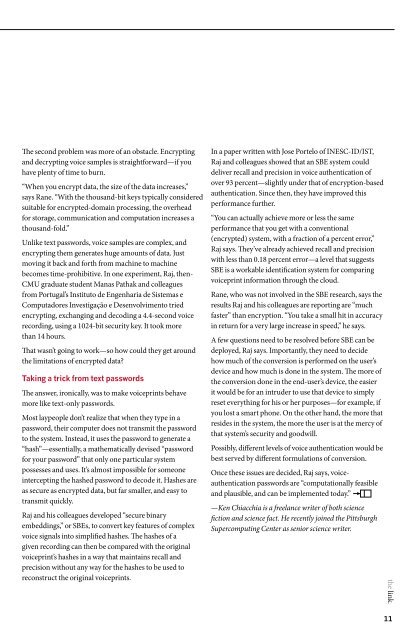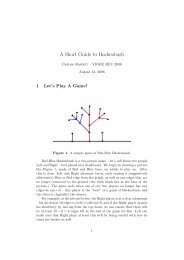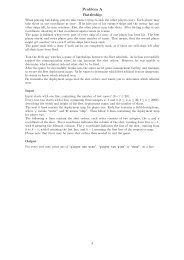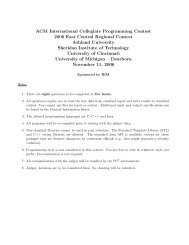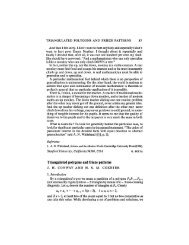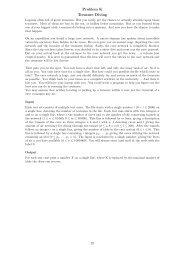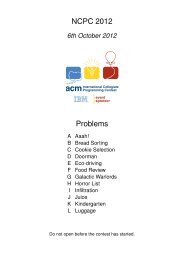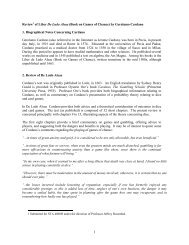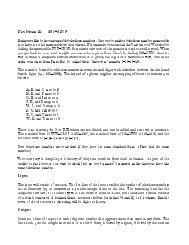Download now (1.3MB, PDF reader required) - Link home page
Download now (1.3MB, PDF reader required) - Link home page
Download now (1.3MB, PDF reader required) - Link home page
You also want an ePaper? Increase the reach of your titles
YUMPU automatically turns print PDFs into web optimized ePapers that Google loves.
The second problem was more of an obstacle. Encrypting<br />
and decrypting voice samples is straightforward—if you<br />
have plenty of time to burn.<br />
“When you encrypt data, the size of the data increases,”<br />
says Rane. “With the thousand-bit keys typically considered<br />
suitable for encrypted-domain processing, the overhead<br />
for storage, communication and computation increases a<br />
thousand-fold.”<br />
Unlike text passwords, voice samples are complex, and<br />
encrypting them generates huge amounts of data. Just<br />
moving it back and forth from machine to machine<br />
becomes time-prohibitive. In one experiment, Raj, then-<br />
CMU graduate student Manas Pathak and colleagues<br />
from Portugal’s Instituto de Engenharia de Sistemas e<br />
Computadores Investigação e Desenvolvimento tried<br />
encrypting, exchanging and decoding a 4.4-second voice<br />
recording, using a 1024-bit security key. It took more<br />
than 14 hours.<br />
That wasn’t going to work—so how could they get around<br />
the limitations of encrypted data<br />
taking a trick from text passwords<br />
The answer, ironically, was to make voiceprints behave<br />
more like text-only passwords.<br />
Most laypeople don’t realize that when they type in a<br />
password, their computer does not transmit the password<br />
to the system. Instead, it uses the password to generate a<br />
“hash”—essentially, a mathematically devised “password<br />
for your password” that only one particular system<br />
possesses and uses. It’s almost impossible for someone<br />
intercepting the hashed password to decode it. Hashes are<br />
as secure as encrypted data, but far smaller, and easy to<br />
transmit quickly.<br />
Raj and his colleagues developed “secure binary<br />
embeddings,” or SBEs, to convert key features of complex<br />
voice signals into simplified hashes. The hashes of a<br />
given recording can then be compared with the original<br />
voiceprint’s hashes in a way that maintains recall and<br />
precision without any way for the hashes to be used to<br />
reconstruct the original voiceprints.<br />
In a paper written with Jose Portelo of INESC-ID/IST,<br />
Raj and colleagues showed that an SBE system could<br />
deliver recall and precision in voice authentication of<br />
over 93 percent—slightly under that of encryption-based<br />
authentication. Since then, they have improved this<br />
performance further.<br />
“You can actually achieve more or less the same<br />
performance that you get with a conventional<br />
(encrypted) system, with a fraction of a percent error,”<br />
Raj says. They’ve already achieved recall and precision<br />
with less than 0.18 percent error—a level that suggests<br />
SBE is a workable identification system for comparing<br />
voiceprint information through the cloud.<br />
Rane, who was not involved in the SBE research, says the<br />
results Raj and his colleagues are reporting are “much<br />
faster” than encryption. “You take a small hit in accuracy<br />
in return for a very large increase in speed,” he says.<br />
A few questions need to be resolved before SBE can be<br />
deployed, Raj says. Importantly, they need to decide<br />
how much of the conversion is performed on the user’s<br />
device and how much is done in the system. The more of<br />
the conversion done in the end-user’s device, the easier<br />
it would be for an intruder to use that device to simply<br />
reset everything for his or her purposes—for example, if<br />
you lost a smart phone. On the other hand, the more that<br />
resides in the system, the more the user is at the mercy of<br />
that system’s security and goodwill.<br />
Possibly, different levels of voice authentication would be<br />
best served by different formulations of conversion.<br />
Once these issues are decided, Raj says, voiceauthentication<br />
passwords are “computationally feasible<br />
and plausible, and can be implemented today.”<br />
—Ken Chiacchia is a freelance writer of both science<br />
fiction and science fact. He recently joined the Pittsburgh<br />
Supercomputing Center as senior science writer.<br />
the link.<br />
11


